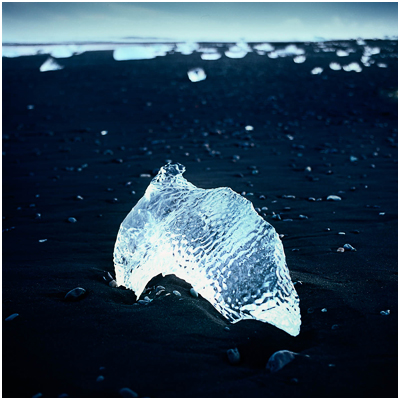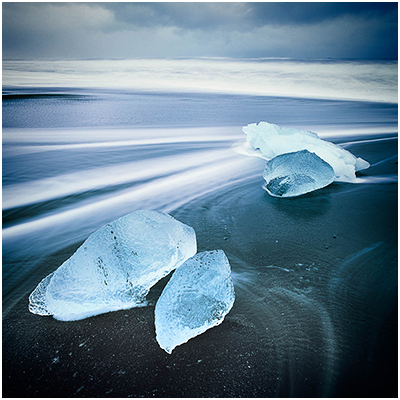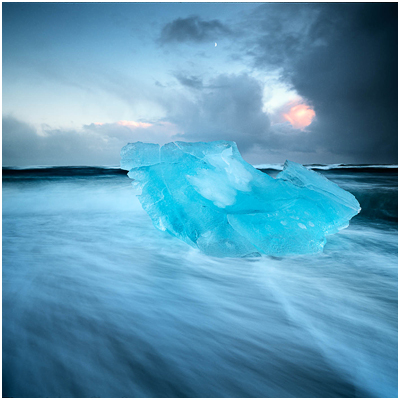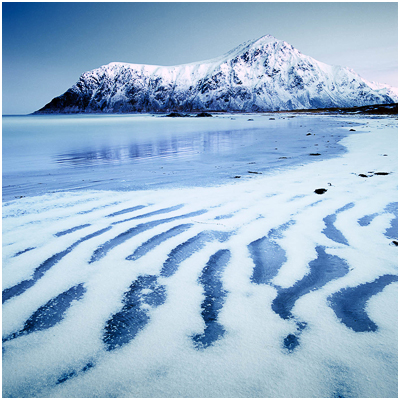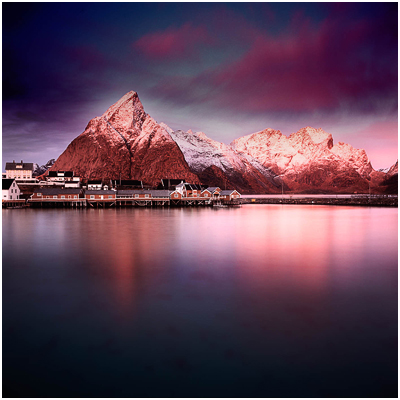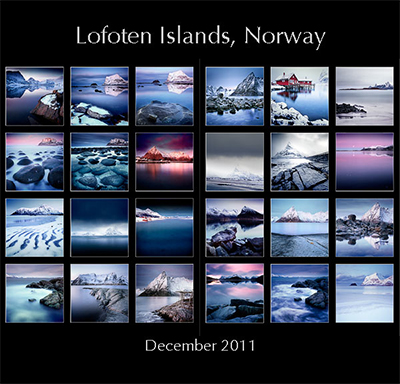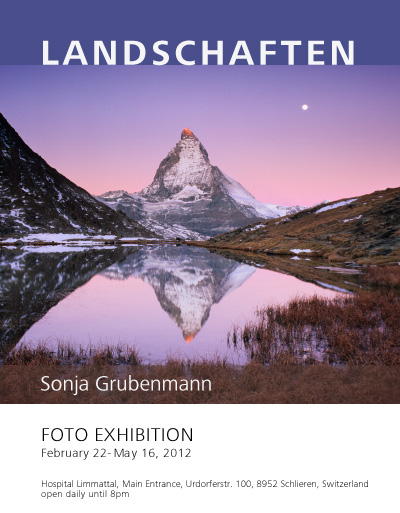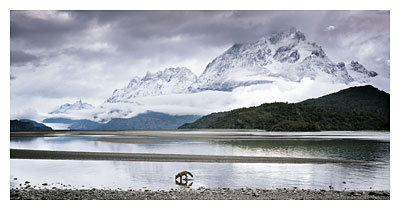I love abstraction in images. When there is an underlying skeleton or framework that suggests a fine composition that your concious mind is not aware of - is just great, but sometimes it's just nice to be a little more forward and be very literal: I found an ice-animal on the beach at Jökulsárlón. It was trying to walk its way back towards the shore, and for some reason, had been left behind by the other tiny, translucent animals that were further on towards their ultimate destination of the sea.
He didn't appear to have a head as such, but I knew he was looking out towards the other little bergs, and wondering if he'd catch up.
I tend to find I can make up stories like that about the objects I'm shooting. They're not just objects, but instead, they have something about them that triggers my imagination.
My little ice animal was very beautiful all the same. He had such a vibrant coat of glass ripples that I knew I had to spend some time with him.
So there I was, lying on my tummy on the sand with my wonky Hasselblad camera, figuring out just how to tell a story about him. His siblings were the perfect back drop for him, so I shot the entire picture on a shallow depth of field (why is it that so much landscape material is always sharp from near to far? Surely shallow depth of field can also help draw the eye towards and also away from subjects within the frame). I deliberately ensured his siblings were out of focus.
Square format seems to be happy to have objects placed in the middle of the frame too.
I'm enjoying very much the freedom to break some self imposed rules to my compositions by using the square aspect ratio. But I feel it's not a replacement for my trusty 6x7 and 5x4 aspect ratios. It's simply just another string to my bow, and by using square at the time of capture (rather than cropping later), I feel I'm forced to look at my surroundings in a different way.
As I've said in the past, and particularly in my Aspect Ratios e-book, the shape of the frame you compose with, really does have a massive impact on your choice of composition. For me, the aspect ratio of the camera is an often overlooked, fundamental influence on your picture making abilities. Buy a camera with an aspect ratio that you do not understand, or have no eye for, and you're goosed.
Back to my ice-animal.
Like so many bergs at Jökulsárlón, he was simply just one of many casualties that had been thrown up onto the black sand beach. Strung out to dry and postponed from the inevitable, I knew that one day he would eventually become, just another part of the sea.

